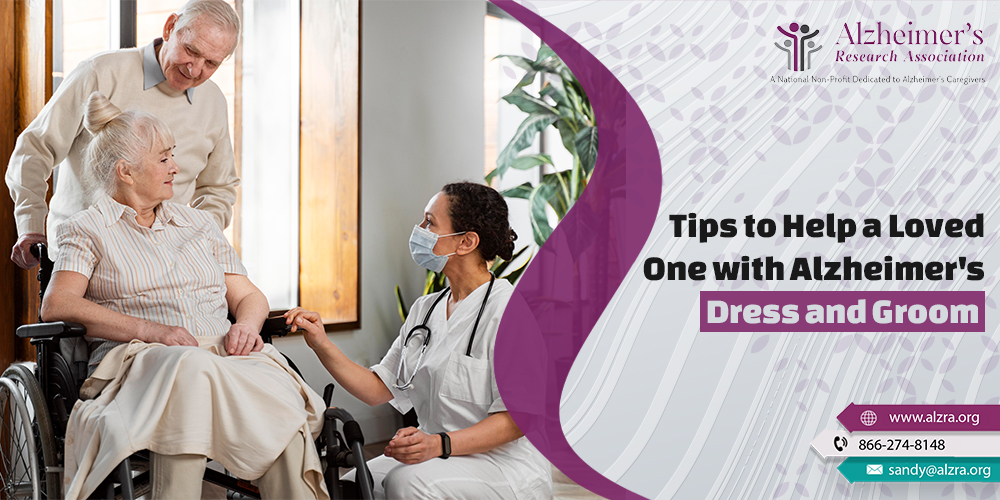Tips to Help a Loved One with Alzheimer’s Dress and Groom
BethHarmon January 17, 2023
Getting dressed is a daily part of our independence, and how we dress contributes to our sense of self. The ability to make decisions and dress or groom oneself deteriorates as Alzheimer’s disease progresses.
The caregiver can assist the client in maintaining their individuality and self-worth by being aware of their specific challenges. When helping your loved one get dressed, assist them in making their own decisions, ensuring that they are clean and comfortable, and expressing their personality and personal style.
Although dressing and grooming your loved one can be challenging, some tips can help simplify the process.
Dressing
The process of selecting and donning clothing can become frustrating for the dementia patient as the disease advances through the early stages. The individual can forget how to get dressed or feel overwhelmed by the options or the task. The following tips may help cope with such situations:
- When dressing or grooming a person with Alzheimer’s, provide plenty of time. Rushing them can make them feel anxious and frustrated.
- Simplify options for your loved one since too many choices can make them panic. Keep extra clothing out of the closets. Give the person a choice to select their preferred attire or colors, if acceptable, but try to limit your selection to just two.
- Plan the procedure. Arrange the clothes so that your loved one can wear them in the correct order. Give clear, direct instructions like “Put your arms in the sleeves” rather than “Get dressed” when you hand the recipient each item one at a time.
- Choose simple and comfortable attire. Pullover tops are more challenging to maneuver than cardigans, shirts, and blouses with front buttons. Choose soft, flexible fabrics, and make sure your clothing is loose-fitting, especially around the waist and hips.
- Be adaptable. If the person intends to wear the same outfit repeatedly, purchase extras or keep comparable options on hand. Try to keep your attention on the fact that the person was able to get dressed, regardless of how mismatched their attire may be.
Grooming
A dementia patient could lose the ability to shave, cut their fingernails, or comb their hair. They can become confused about the function of objects like combs or nail clippers. The following tips can help with their grooming:
- Keep the grooming procedures. If the person has always visited a barber or beauty parlor, keep doing so. It could be feasible to arrange for the barber or hairstylist to visit the client at home if the encounter becomes upsetting.
- Use your loved one’s favorite products. Permit them to continue applying their preferred cologne, shaving cream, toothpaste, or makeup.
- Join the person in the task. Motivate them to do the same as you while you, for instance, comb your hair.
- Make use of simple and safer grooming tools. Electric shavers and cardboard nail files can be less dangerous than clippers and razors.
Alzheimer’s Research Association is a non-profit organization dedicated to helping caregivers of Alzheimer’s disease and dementia. We provide the latest information and news about the illness and helpful tips to help caregivers cope with their daily caregiving challenges. We realize the most important thing that a caregiver needs is financial assistance. Therefore, we provide grants to caregivers to ease their financial burden. Caregivers can apply for grants here: https://www.alzra.org/grant-applications/.
You can also help caregivers in their endeavor by donating as much as possible: https://www.alzra.org/donate-now/#donate.



